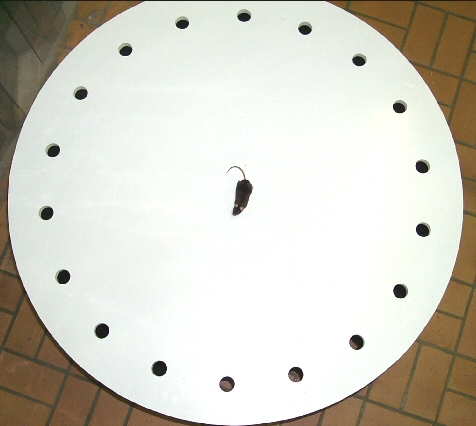Author: Vignesh Subramanian, Class of 2024

Figure 1: Barnes maze tests were performed to assess the spatial reference memory of the knock-in AD mouse models.
Alzheimer’s disease (AD) is a progressive, neurodegenerative disease characterized by significant memory loss and cognitive decline that worsen with age. While the disease’s long-established hallmarks include the aggregation of two misfolded proteins known as beta-amyloid and phosphorylated tau, recent research has revealed links between AD and other protein malformations. One such protein, phosphodiesterase 4B (PDE4B, encoded by the gene PDE4B), is an enzyme that regulates intracellular levels of cyclic adenosine monophosphate (cAMP), a secondary messenger mediating a wide range of physiological functions. Under normal conditions, PDE4B regulates cAMP levels by hydrolyzing, or breaking down, the molecule. However, when exposed to AD-linked beta-amyloid plaques, the transcription of PDE4B is upregulated, leading to excessive production of the PDE4B protein that subsequently triggers the release of damaging inflammatory factors.
Viewing PDE4B as a potential target for AD therapy, researchers at Lancaster University sought to determine whether inhibition of PDE4B transcription could preclude the manifestation of memory deficits and low cerebral glucose metabolism, both key AD-related phenotypes. The researchers genetically modified a mouse line to insert an amyloid precursor protein (APP) gene knock-in into the mice’s genomes. This modification caused them to express mutant precursor protein that ultimately deposits into amyloid plaques, establishing an AD model. The researchers then divided the App knock-in mice into two groups: one group was kept homozygous for the PDE4B gene, while the other group received a hypomorphic (causing partial loss of gene function) mutation that genetically inhibits the cAMP hydrolytic activity of a PDE4B protein subtype. Finally, the researchers conducted Barnes maze tests and 2-deoxyglucose (2-DG) brain imaging to assess each group’s overall spatial memory and glucose metabolism.
The researchers found that hypomorphic PDE4B mice were able to navigate their way across the maze significantly faster than mice without the mutation, suggesting the mutation prevented the development of spatial memory deficits. The researchers also observed significantly increased glucose utilization in hypomorphic PDE4B mice, restoring metabolism levels to match those of wild-type controls. In contrast, mice without the mutation exhibited far lower metabolism levels across the hippocampal CA1 regions and prefrontal cortices of their brains. These results collectively indicate that both cerebral glucose metabolism and spatial reference memory are impaired in the AD mice lacking the hypomorphic mutation, and that the mutation induced a protective effect for the other mouse group by reducing their PDE4B activity, highlighting a new therapeutic target for future AD research.
Works Cited:
[1] Armstrong, P., Güngör, H., Anongjanya, P., Tweedy, C., Parkin, E., Johnston, J., Carr, I. M., Dawson, N., & Clapcote, S. J. (2024). Protective effect of PDE4B subtype-specific inhibition in an App knock-in mouse model for Alzheimer’s disease. Neuropsychopharmacology, 1-10. doi: 10.1038/s41386-024-01852-z
[2] Image retrieved from: https://commons.wikimedia.org/wiki/File:Barnes_maze.jpg

